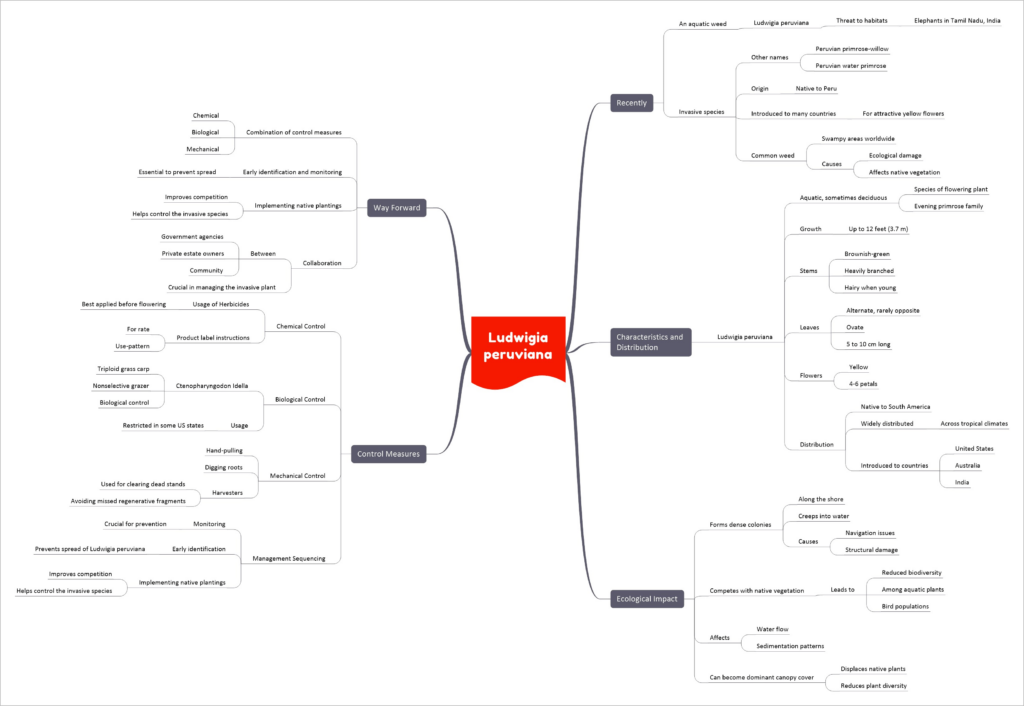Ludwigia Peruviana – Distribution, Impacts, Control Measures
Recently, an aquatic weed called Ludwigia peruviana has been posing a threat to the habitats of elephants in Tamil Nadu, India. This invasive species, also known as Peruvian primrose-willow or Peruvian water primrose, is native to Peru but has been introduced to many other countries for its attractive yellow flowers. It is now a common weed in swampy areas worldwide, causing ecological damage and affecting native vegetation.
Characteristics and Distribution
- Ludwigia peruviana is an aquatic, sometimes deciduous species of flowering plant in the evening primrose family.
- It can grow up to 12 feet (3.7 m) in height.
- Stems are brownish-green, heavily branched, and hairy when young.
- Leaves are alternate, rarely opposite, ovate, and 5 to 10 cm long.
- The flowers are yellow with 4-6 petals.
- Native to South America and widely distributed across tropical climates.
- Introduced to countries like the United States, Australia, and India.
Ecological Impact
- Forms dense colonies along the shore and creeps into the water, causing navigation issues and structural damage.
- Competes with native vegetation, leading to reduced biodiversity among aquatic plants and bird populations.
- Reduces water flow and affects sedimentation patterns.
- Can become the dominant canopy cover, displacing native plants and reducing plant diversity.
Control Measures
- Chemical Control
- Herbicides can be used, best applied before flowering.
- Follow product label instructions for rate and use-pattern.
- Biological Control
- Ctenopharyngodon Idella (Triploid grass carp) can be used as a nonselective grazer for biological control.
- Use is restricted in some US states.
- Mechanical Control
- Hand-pulling and digging roots can be effective.
- Harvesters may be used for clearing dead stands, avoiding missed regenerative fragments.
- Management Sequencing
- Monitoring and early identification are crucial in preventing the spread of Ludwigia peruviana.
- Implementing native plantings can improve competition and help control the invasive species.
Way Forward
- Employ a combination of chemical, biological, and mechanical control measures for effective management.
- Early identification and monitoring are essential to prevent its spread.
- Implementing native plantings can improve competition and help control the invasive species.
- Collaboration between government agencies, private estate owners, and the community is crucial in managing this invasive plant.
If you like this post, please share your feedback in the comments section below so that we will upload more posts like this.


